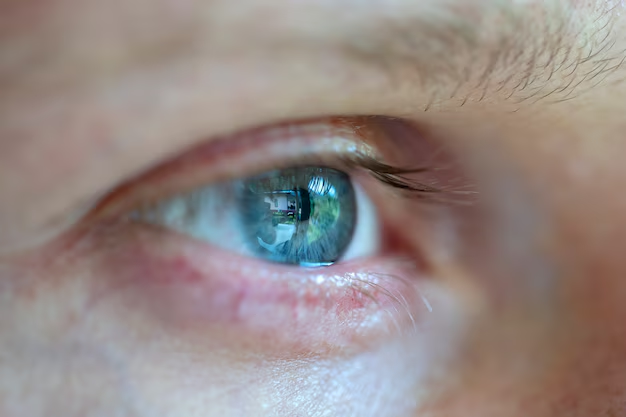Understanding the Development of Cataracts: How Long Does It Really Take?
Imagine looking through a foggy window. It's frustrating when your vision is obstructed and everything appears blurred. For many, this is what living with cataracts feels like. Cataracts are a common eye condition, yet there's often confusion about how long it takes for them to develop fully. Let's delve into this topic to demystify the process of cataract development.
🤔 What Are Cataracts and How Do They Form?
Cataracts occur when the clear lens of the eye becomes cloudy, leading to visual impairment. This cloudiness is primarily due to the clumping of proteins in the lens, a natural process that tends to happen as part of the aging process.
Causes of Cataract Formation
- Aging: The most significant factor, as the proteins in the eye lens break down over time.
- Genetics: Family history can predispose individuals to early development.
- Lifestyle Factors: Smoking, excessive alcohol consumption, and prolonged exposure to ultraviolet sunlight can accelerate cataract formation.
- Medical Conditions: Diabetes and past eye injuries also play a role.
⌛ Stages of Cataract Development
The progression of cataracts is usually slow and categorized into different stages. Understanding these stages helps in anticipating how cataracts evolve over time.
Stage 1: Initial Cataracts
Early signs are often subtle. Vision may become slightly blurred, and you might notice some difficulty with night vision. Colors might not appear as bright as they used to.
Stage 2: Immature Cataracts
At this stage, cloudiness increases, and there's more noticeable impairment in vision. You might experience glare and halos around lights, particularly at night.
Stage 3: Mature Cataracts
Vision becomes significantly impaired, with substantial cloudiness covering the lens. Reading and driving might become more challenging without corrective lenses or surgery.
Stage 4: Hypermature Cataracts
At this advanced stage, the lens might become entirely opaque, and there's a risk of inflammation and increased pressure in the eye.
📅 How Long Does It Typically Take for Cataracts to Develop?
The development timeline for cataracts varies significantly among individuals due to factors like age, overall health, and environmental influences.
Factors Influencing Development Time
- Age: Older individuals typically experience quicker progression.
- Underlying Health Conditions: Conditions like diabetes can accelerate cataract development.
- Lifestyle Choices: Smoking and exposure to UV rays significantly impact the timeline.
For many, cataracts develop over several years. However, rapid-onset cataracts can develop more quickly in specific situations, such as after an eye injury or in individuals with certain metabolic disorders.
🚦 Recognizing the Symptoms Early
Detecting cataracts early can lead to better management and timely intervention. Here are some signs to watch for:
- Fading or yellowing of colors
- Increased difficulty with vision at night
- Frequent changes in eyeglass or contact lens prescriptions
- Sensitivity to light and glare
- Double vision in a single eye
📝 Key Takeaway Points
- Regular Eye Exams: Routine checks are crucial for early detection.
- Lifestyle Adjustments: Protect your eyes from UV rays and maintain a healthy diet to slow down cataract progression.
- Monitor Changes: Keep track of any noticeable changes in vision quality.
🕵️♂️ Diagnosing Cataracts: What to Expect
Diagnosis typically involves a comprehensive eye exam, which includes:
- Visual Acuity Test: Measures how well you see at various distances.
- Dilated Eye Exam: The doctor examines the retina for signs of cataracts.
- Tonometry: Measures the pressure inside the eye, important for ruling out conditions like glaucoma.
🗣️ Discussing Options with Your Eye Specialist
Treatment Possibilities
While early-stage cataracts might only require stronger eyeglasses or improved lighting, surgery tends to be the recommended path when vision significantly hinders daily activities.
Understanding Cataract Surgery
Considered safe and effective, cataract surgery involves removing the cloudy lens and replacing it with a clear artificial one. Post-surgery, most people experience a substantial improvement in vision.
- Procedure Duration: Generally brief, typically lasting less than an hour.
- Recovery Time: Most individuals recover within a few weeks, with significant improvement in vision quality.
🔑 Summary Bullet Points with Emojis
- 👓 Regular Eye Check-ups: Critical for early diagnosis and monitoring progression.
- 🌞 Lifestyle Modifications: Protect eyes with UV-blocking sunglasses.
- 🍎 Healthy Diet: A nutritious diet supports eye health.
- 🩺 Discuss Treatment: Talk with specialists about managing symptoms and potential surgery.
- 🔭 Track Vision Changes: Take note of changes in vision quality.
Understanding how cataracts develop and recognizing the symptoms early on can significantly ease the management process. By being proactive about eye care and staying informed, individuals can effectively manage cataracts, ensuring that their vision remains as clear and vibrant as possible throughout life.
